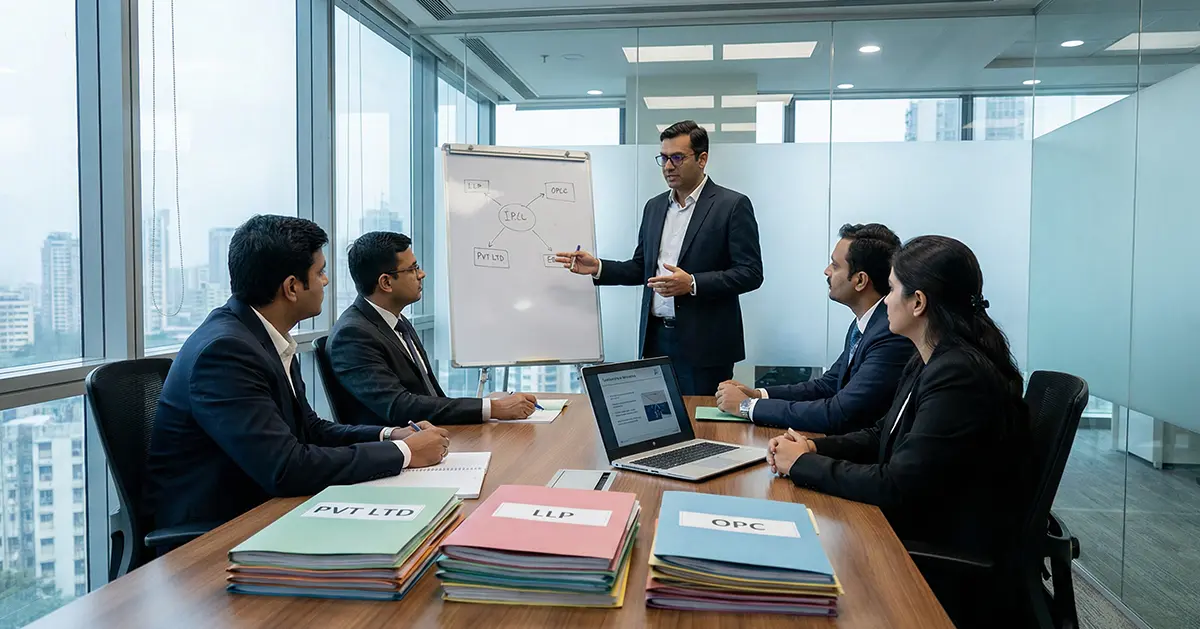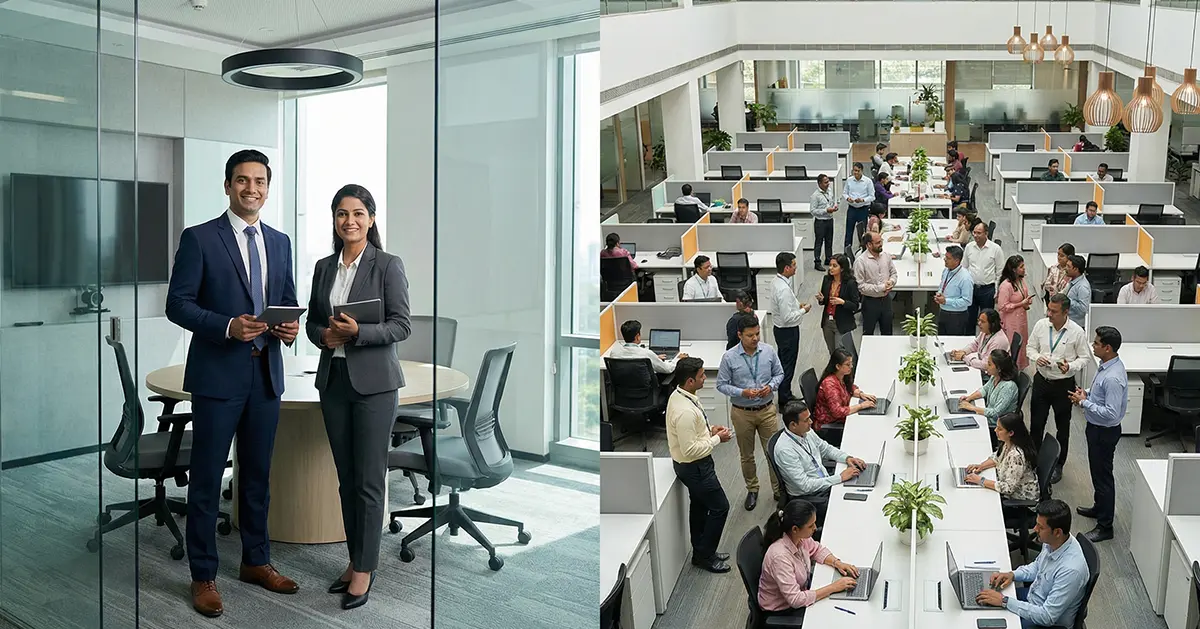
Section 8 companies in India play a key role in driving social change. They use their profits to support causes like education, healthcare, and environmental protection instead of distributing them to shareholders. These companies show how business and compassion can work together. Through Section 8 company registration, individuals and organizations can formally establish a not-for-profit entity that operates with credibility and legal recognition.
Knowing the top Section 8 companies helps donors, CSR teams, and partners choose credible organizations that make a real difference. This blog highlights 10 leading Section 8 companies in India that inspire with their work, transparency, and impact.
What is a Section 8 Company in India?
A Section 8 company is a not-for-profit organization formed under the Companies Act, 2013, to promote charitable objectives, such as education, science, art, environmental protection, and social welfare. Unlike regular companies, it cannot distribute profits to its members and must reinvest them entirely to advance its mission and create social value.
Key Features of a Section 8 Company:
- Non-Profit Objective: It exists to serve social or charitable purposes, not to earn or distribute profits.
- Profit Utilization: Any income or surplus is strictly used for achieving its stated objectives, ensuring transparency and accountability.
- Legal Recognition: It enjoys a clear legal identity, limited liability, and protection under Indian law, similar to other registered entities.
- Tax and CSR Benefits: A Section 8 company is eligible for tax exemptions under the Income Tax Act and can receive CSR contributions from corporates.
- Credibility and Trust: Registration enhances the organization’s reputation, making it easier to attract donors, grants, and government support.
- Governance and Compliance: It is bound by annual filings, audits, and reporting standards, which promote responsible management and good governance.
Key Conditions for Forming a Section 8 Company:
- The company’s objectives must focus on the promotion of commerce, art, science, sports, education, research, social welfare, religion, charity, protection of the environment, or similar causes.
- Profits or income must be applied solely toward promoting these objectives and cannot be distributed as dividends to members.
- The company enjoys the privileges and is subject to the obligations of a limited company under the law.
To understand the formation process and legal framework, you can read this detailed guide on the formation of companies with charitable objects under Section 8 of the Companies Act, 2013.
Top 10 Section 8 Companies in India
India has thousands of Section 8 companies creating social impact, but a few stand out for their scale, transparency, and measurable results. This list of Section 8 companies in India features leading organizations that combine purpose with professionalism.
They are selected on the basis of verified Section 8 status, national reach, documented impact, CSR partnerships, and publicly available annual reports.
1. Infosys Foundation
Founded in 1996 and headquartered in Bengaluru, Infosys Foundation leads several large-scale social initiatives across India. It focuses on inclusive growth by supporting education, healthcare, rural development, and art.
Mission:
The Foundation aims to promote sustainable development and equal opportunities for underprivileged communities through practical, long-term solutions.
Key Areas of Work:
- Upgrades school infrastructure and provides scholarships to deserving students.
- Strengthens hospitals with essential medical equipment and healthcare programs.
- Promotes art, culture, and environmental protection to support holistic growth.
Why It Stands Out
Infosys Foundation runs projects across India with strong monitoring and transparent systems. Its partnerships with schools, hospitals, and NGOs have improved millions of lives. The organization’s data-driven approach ensures accountability and measurable social impact.
What You Can Learn
- Prioritize depth over scale.
- Design projects that create lasting community impact rather than short-term visibility.
- Measure outcomes regularly to refine strategies and earn public trust.
2. Reliance Foundation
Reliance Foundation, founded in 2010 and headquartered in Mumbai, is one of India’s largest non-profit organizations. It drives inclusive growth through programs in rural transformation, healthcare, education, sports, and disaster response.
Mission
The Foundation works to create a more equitable India by improving lives, empowering communities, and fostering sustainable development at scale.
Key Areas of Work
- Enhances rural livelihoods through farmer support, skill development, and self-help groups.
- Provides affordable healthcare and emergency medical aid across remote regions.
- Promotes education, sports for youth, and women’s empowerment through structured initiatives.
- Leads nationwide disaster relief and rehabilitation efforts during crises.
Why It Stands Out
Reliance Foundation operates at a national scale, reaching millions of beneficiaries. It combines corporate resources with grassroots engagement to deliver real results. Its integrated programs ensure that rural, health, and education initiatives work together for sustained community growth.
What You Can Learn
- Think big, but stay connected to the ground.
- Integrate multiple focus areas for holistic results.
- Leverage partnerships and data to expand impact while keeping operations transparent.
3. Azim Premji Foundation
Established in 2001 and headquartered in Bengaluru, the Azim Premji Foundation focuses on transforming India’s public education system. It works with governments, educators, and communities to improve teaching quality and learning outcomes.
Mission
The Foundation aims to build a just, equitable, and humane society by ensuring quality education for all, especially in underserved regions.
Key Areas of Work
- Improves government school systems through teacher training and curriculum development.
- Conducts field research and collaborates with policymakers to strengthen education delivery.
- Supports livelihoods and health initiatives in rural communities.
Why It Stands Out
The Foundation has built deep partnerships with state governments and educational institutions. Its long-term presence in rural districts helps drive systemic change rather than short-term results. Its combination of research, training, and policy engagement makes it a leader in education reform.
What You Can Learn
- Focus on one mission and master it.
- Invest in capacity building to create sustainable change.
- Use data, research, and collaboration to influence systems, and not just individual projects.
4. Tata Trusts
Tata Trusts is one of India’s oldest and most respected philanthropic organizations. Founded in 1892 and headquartered in Mumbai, it channels the Tata Group’s legacy toward improving lives through education, healthcare, livelihood, and innovation.
Mission
Tata Trusts aims to drive sustainable and inclusive development across India by enabling communities, supporting innovation, and promoting equitable access to opportunities.
Key Areas of Work
- Strengthens rural livelihoods through water conservation, skill training, and agricultural programs.
- Improves public health systems and nutrition through community-led initiatives.
- Promotes quality education, digital literacy, and women’s empowerment.
- Supports innovation and research in social impact sectors.
Why It Stands Out
Tata Trusts operates with unmatched credibility and history. Its projects cover nearly every social domain, from rural upliftment to cutting-edge innovation. The Trusts partner with government bodies, global institutions, and NGOs to achieve long-term transformation.
What You Can Learn
- Build on legacy and trust to scale impact.
- Adopt a multi-sector approach for deep, sustainable results.
- Collaborate widely, as strong partnerships amplify every good initiative.
5. Goonj
Founded in 1999 and headquartered in New Delhi, Goonj focuses on turning urban surplus into rural development resources. It redefines the idea of “charity” by promoting dignity, self-reliance, and community-led change.
Mission
Goonj aims to use underutilized urban materials as tools for rural development, disaster relief, and social empowerment.
Key Areas of Work
- Runs the “Cloth for Work” initiative, where villagers receive clothes in exchange for community work.
- Provides disaster relief materials to affected areas nationwide.
- Focuses on menstrual hygiene awareness and rural education.
Why It Stands Out
Goonj’s model challenges traditional donation practices. It treats material contribution as a catalyst for community participation, not charity. Its simple, replicable system has inspired similar models globally.
What You Can Learn
- Think innovatively about resource use.
- Design solutions that restore dignity to beneficiaries.
- Use simplicity and transparency to build strong community engagement.
6. Smile Foundation
Established in 2002 and based in New Delhi, Smile Foundation works toward empowering underprivileged children and families through education, healthcare, and livelihood initiatives.
Mission
The Foundation seeks to enable social change by helping individuals become self-reliant through access to quality education and essential services.
Key Areas of Work
- Runs the “Mission Education” program for children from low-income backgrounds.
- Offers mobile healthcare services through “Smile on Wheels.”
- Provides skill training for youth and women to promote financial independence.
Why It Stands Out
Smile Foundation operates in more than 25 states, impacting over a million people each year. Its holistic approach combines education, health, and livelihood to create long-term empowerment.
What You Can Learn
- Combine education with livelihood programs for sustainable outcomes.
- Invest in mobility and outreach to reach underserved areas.
- Keep beneficiaries at the center of every initiative.
7. Akshaya Patra Foundation
Akshaya Patra Foundation runs one of the world’s largest mid-day meal programs for school children. Founded in 2000 and headquartered in Bengaluru, it operates in partnership with the Government of India.
Mission
The Foundation aims to eliminate classroom hunger and promote education by providing nutritious meals to children in government and government-aided schools.
Key Areas of Work
- Serves over two million meals daily across India.
- Partners with governments and donors to ensure food security for schoolchildren.
- Promotes nutrition awareness and kitchen automation for efficiency.
Why It Stands Out
Akshaya Patra combines large-scale logistics with social purpose. Its kitchens are models of efficiency, blending technology and compassion. The Foundation ensures no child is deprived of education because of hunger.
What You Can Learn
- Balance efficiency with empathy.
- Use technology to scale operations responsibly.
- Focus on one powerful mission and pursue it relentlessly.
8. Teach For India
Founded in 2009 and headquartered in Mumbai, Teach For India (TFI) works to bridge educational inequality by placing committed fellows in under-resourced schools across the country. It operates as part of the global Teach For All network.
Mission
The organization aims to provide excellent education to all children in India and build a movement of leaders who will end educational inequity.
Key Areas of Work
- Recruits and trains graduates and professionals to teach in low-income schools for two years.
- Builds leadership skills among fellows to drive systemic change in education.
- Engages alumni to influence education policy, innovation, and social entrepreneurship.
Why It Stands Out
Teach For India has built a strong network of changemakers who continue to work in education, policy, and governance. Its alumni have launched impactful initiatives that improve education access nationwide.
What You Can Learn
- Invest in people to drive social change.
- Create leadership pipelines that sustain impact beyond a single project.
- Empower individuals to become long-term advocates for the cause.
9. HelpAge India
HelpAge India, established in 1978 and headquartered in New Delhi, is one of the country’s most trusted organizations dedicated to the care and rights of the elderly. It advocates for senior citizens’ welfare and provides direct support through various programs.
Mission
HelpAge India strives to serve the disadvantaged elderly, promote their dignity, and ensure they live healthy and fulfilling lives.
Key Areas of Work
- Runs mobile healthcare units for the elderly in rural and urban areas.
- Provides livelihood support and pension awareness for senior citizens.
- Advocates for elder-friendly policies and social security measures.
Why It Stands Out
HelpAge India has decades of experience addressing the unique needs of India’s ageing population. Its sustained advocacy and field programs have influenced national policies and improved countless lives.
What You Can Learn
- Focus on an underserved but growing need.
- Blend direct support with strong advocacy.
- Commit to consistent service to build trust over generations.
10. CRY (Child Rights and You)
CRY works to ensure that every child in India has the right to a happy, healthy, and creative childhood. Founded in 1979 and headquartered in Mumbai, it partners with grassroots organizations and communities across the country.
Mission
CRY aims to restore basic rights, such as education, health, protection, and participation, to underprivileged children so they can realize their full potential.
Key Areas of Work
- Promotes education and fights child labor through school enrollment programs.
- Advocates for child protection and healthcare access in marginalized regions.
- Partners with local NGOs to strengthen child rights systems.
Why It Stands Out
CRY combines advocacy, fieldwork, and community engagement effectively. Its consistent campaigns have influenced child rights policies and improved access to education for millions.
What You Can Learn
- Combine grassroots work with national advocacy.
- Use community participation to ensure long-lasting change.
- Champion one clear mission and communicate it powerfully.
Note: This is not an exhaustive ranking of all Section 8 companies in India, but a curated list of prominent ones for reference.
Common Traits of Section 8 Companies
India’s leading Section 8 companies may differ in focus, but they share certain qualities that make their work effective and sustainable. These common traits help them build trust, scale impact, and remain resilient over time.
- Governance and Transparency: They follow strong governance systems with independent audits, public disclosures, and clear accountability. Transparent operations inspire donor confidence and long-term partnerships.
- Measurable Impact: High-impact organizations define clear goals and track measurable outcomes. They rely on data, field reports, and third-party evaluations to assess progress and refine strategies.
- Strong Partnerships: They collaborate with CSR partners, government agencies, and global institutions. These partnerships provide resources, technical support, and wider reach, making programs more effective.
- Scalability and Sustainability: Successful Section 8 companies design models that can grow without losing quality. They focus on innovation, financial planning, and operational stability to ensure their initiatives last.
- Effective Fundraising and Reputation: A credible reputation and clear communication help them attract funding and goodwill. By consistently demonstrating results, they strengthen their brand and donor relationships.
- Community-Centric Approach: They involve local communities in designing and executing projects. This approach fosters ownership, ensures relevance, and leads to lasting impact.
- Leadership and Vision: Their leaders combine strategic thinking with deep social commitment. A strong vision guides decisions and keeps the organization aligned with its mission.
Additionally, they must obtain:
- License from the Central Government (MCA)
- PAN, TAN, and GST registration (if applicable)
- 12AB and 80G registration (for tax exemption and donor benefit)
- FCRA registration (if receiving foreign donations)
How to Choose or Partner with a Section 8 Company?
Whether you’re a donor, CSR leader, or NGO collaborator, choosing the right Section 8 company is essential for credible and long-lasting impact. The right partner ensures compliance, transparency, and meaningful outcomes.
a. For Donors, NGOs, and CSR Teams
Before partnering, verify the organization’s legal and financial standing.
- Confirm Section 8 registration, along with 12AB and 80G approvals.
- Review audit reports, annual filings, and governance frameworks.
- Assess their track record, impact metrics, and project delivery consistency.
- Prioritize organizations with transparent reporting and strong community engagement.
b. For Those Establishing a Section 8 Company
If you’re planning to start a Section 8 company, begin with a clear purpose and compliance roadmap.
- Draft a strong Memorandum of Association (MOA) and Articles of Association (AOA) that define your objectives and governance model.
- Build a skilled management and operations team with experience in finance, law, and social impact.
- Design a sustainable funding model that includes grants, CSR support, and earned income (if permitted).
- Set up transparent systems for reporting, auditing, and compliance from day one.
Studying how top Section 8 companies operate can help you create a strong, credible, and scalable foundation.
To know the complete cost breakdown and government fee structure, read the blog on Section 8 company registration fees in India.
Pitfalls to Avoid While Establishing a Section 8 Company
Many Section 8 companies face challenges because of weak systems or unclear direction. Avoid these common mistakes early on.
- Unclear objectives: Vague goals make it difficult to measure progress or attract funding. Define your mission clearly and align every activity with it.
- Weak governance: Lack of independent oversight can lead to inefficiency or misuse of funds. Establish a strong board and clear accountability processes.
- Non-compliance: Missing statutory filings or ignoring FCRA, 12AB, or 80G regulations can result in penalties and loss of credibility.
- Poor financial transparency: Inconsistent reporting and incomplete audits can discourage donors and CSR partners. Maintain open, accurate records.
- Limited community engagement: Ignoring beneficiary feedback or local needs reduces impact and sustainability. Keep communities involved at every stage.
Staying compliant, transparent, and focused helps your organization build trust and create long-term value.
Conclusion
Section 8 companies are shaping India’s social and economic growth by combining purpose with professionalism. Their success shows that transparency, accountability, and vision can create lasting change. If you’re planning to start your own or want to ensure full compliance, RegisterKaro can help you do it quickly, efficiently, and with expert guidance. Contact us today.
Frequently Asked Questions
A Section 8 company is a non-profit organization registered under the Companies Act, 2013. It operates for charitable purposes such as education, healthcare, art, and social welfare. Profits are reinvested to promote its mission rather than distributed to members or shareholders.




